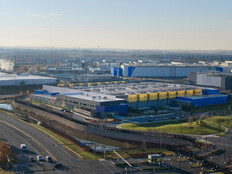Understanding What Zero-Trust Tools Can Do
Industry partnerships are critical to improving agencies’ zero-trust security architectures because they can help federal technologists understand new cloud platform features — which are being rolled out faster than ever — and what’s possible for their organizations, Caron says.
The first phase of ATARC’s Zero Trust Lab saw about 70 vendors individually present their solutions to federal participants so they could see what was available to their agencies. Phase two was all about integrating those solutions within agencies’ existing security architectures.
“We said, ‘All right, the reality is, this is an integration effort; all these tools have to work together, so here are the use cases,’” Caron says. “‘Please show us an integrated, real-life example and run through these live.’”
Phase two showed not only what a baseline integration of zero-trust tools would look like but also how it could be tailored to meet individual agencies’ specific security requirements, he adds.
The Zero Trust Lab had hosted five integration demonstrations as of mid-November, and by all accounts they were well received, Caron says.
Advancing Zero-Trust Adoption and Education
CIOs not only have to ensure zero-trust use cases are interpreted correctly but also must determine their prerequisites and relay their agencies’ needs to vendors, Caron says.
ATARC recently consolidated its multicloud and zero-trust working groups, which is why Caron feels it’s the right time to pursue the five new tracks. All are technology areas drawing increased interest from agencies, Caron says.
Regarding AI and zero trust, Caron wants to know not only how to prevent malicious AI activity but also how to leverage the technology for the good of zero-trust solutions.
To date, demo participation has been high, and the working group continues to grow because federal technologists want to see zero trust in action.
“I think the government people that we have participating are at various levels within their zero-trust journeys and education,” Caron says. “I think it is helping.”











